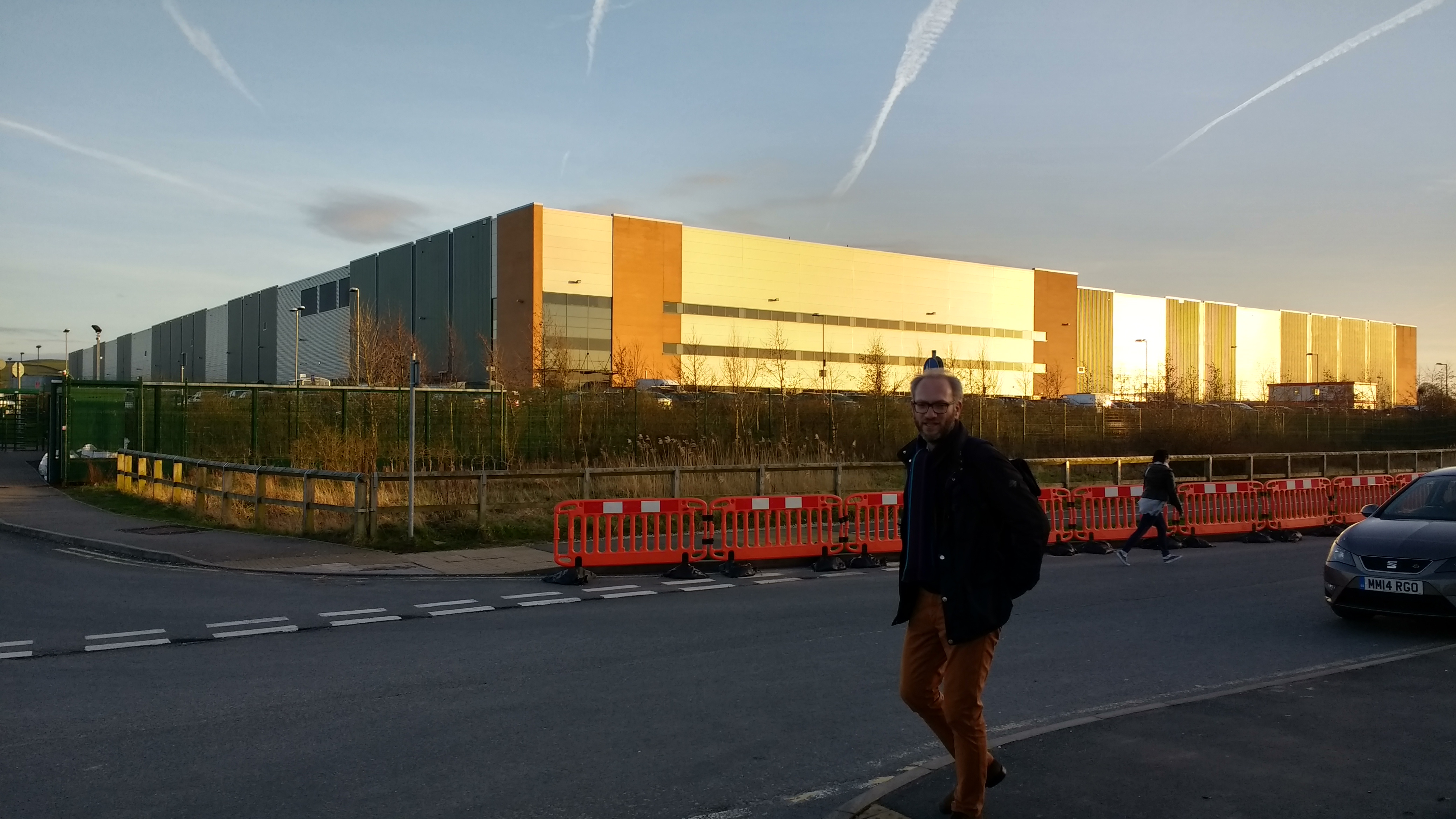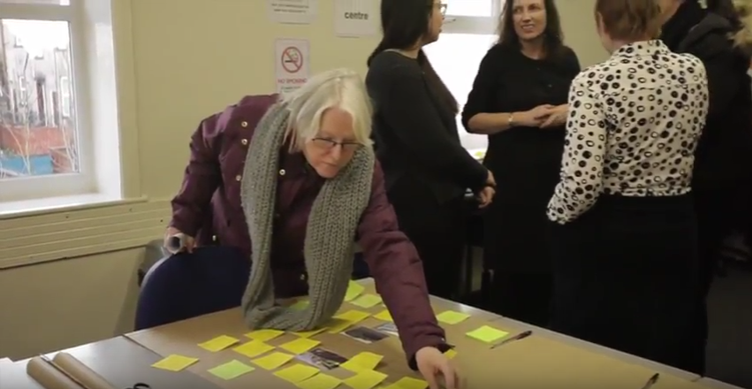The word ‘regeneration’ increasingly causes eyes to roll and eyebrows to raise, and those proposing new development have often shifted to focusing on ‘place-making’. Local authorities talk about their role as ‘place-shaping’. Why should the word we use, to describe a programme which can stretch decades, matter? What is lost (and gained) by ditching regeneration and adopting ‘place’?
Regeneration has become a difficult word. I find that lots of professional colleagues are increasingly choosing not to use it. It is controversial. Every day I cycle past Elephant Park, a massive development site that used to be known as the Heygate Estate regeneration. Many displaced residents locally feel dissatisfied with how the benefits of huge corporate investment will ultimately benefit them. On the other side of London, the political challenge to Haringey’s Development Vehicle is rippling across councils.
It is a bit surprising that the Ministry of Housing, Communities and Local Government use the term regeneration. The Mayor of London uses it too. Interestingly, for both, it is in the context of housing estates.
Of course, good projects ‘deliver’ things that are widely welcomed: improved homes, new homes, quality facilities and open spaces, new social and economic opportunities for citizens, and better services to support well-being and address social needs. Why should the word we use, to describe programmes which can stretch decades, matter? What is lost (and gained) by ditching regeneration in favour of adopting ‘place’?
All of us involved in ‘regeneration’ have seen projects and programmes which have changed the physical environment while the social and economic challenges remain – either located in new buildings or displaced elsewhere. The notion of ‘placemaking’ is, in my mind, a concession to this shortcoming. It is a retreat from the aspirations for social and economic regeneration.
There are successes to point to in regenerating the scale and quality of opportunities for residents in existing communities. Many of us continue to pursue that goal under the ‘estate regeneration’ banner, recognising that a masterplan alone is insufficient.

Having worked with Rochdale Boroughwide Housing (RBH) since the end of 2016 in the Lower Falinge and College Bank neighbourhoods, I’ve been impressed by their dual focus on ‘people and place’. They have made this explicit in their communications to residents and others.
These two adjacent neighbourhoods sit right next to Rochdale town centre, and, if it wasn’t for a dual carriageway, they’d probably feel like part of the town centre. A physical regeneration masterplan is being finalised, addressing public realm issues as well as replacing blocks of flats.
Our role has been to help RBH make plans for what should change for existing local residents in the future. A steering group includes several areas of the council, and other key partners like colleges and health. Our meetings are hosted at RBH offices and chaired by Greater Manchester Combined Authority.
Like most deprived areas, our work started in the context of a mixed legacy of previous initiatives. Looking back a decade, there is more community activity and a great partnership between frontline public services addressing the challenges of a minority of residents with acute struggles and chaotic lives. But after 10 years of national economic recovery from recession, talking today to those in low paid work or unemployment, you get the sense that Rochdale feels like a place where the public services on offer struggle to keep up with evolving social and economic challenges.

A high proportion of people are stuck, involuntarily, in part-time work. On Black Friday, last November, a huge local warehouse took on an extra 1000 workers – but just for the weekend. With developable land and motorway access, logistics makes sense as an economic development priority for Rochdale. Although this work is physically demanding, and people worry about an automated future, the convenience of ubiquitous 24/7 online shopping by definition requires inconvenient working shifts, concentrated in places like Rochdale. The cumulative impact on people’s expectation of work is serious. “I’m not fussy about the job I do”, said 19-year old Devon, who wants to run activities in a care setting, but currently works in a cafeteria.
For many people in Lower Falinge and College Bank, health issues determine their access to benefits which support their income. As far as Sarah is concerned, a stable benefit payment without conditions, nor the potential for penalties and sanctions, is welcome. The support to find work appropriate to her health limitations risks, if successful, disrupting her benefits.
At every stage of our work we have been listening to, and asking questions among, residents of Lower Falinge and College Bank. Public service design in this complex context would be very challenging without this kind of design process. After 18 months, we are now finalising a proposal that will seek funding to address some of the particular local challenges. It will be aimed at those people left behind by the local labour market and current welfare system.

We call this the New Pioneers Programme. It will involve careers brokers who are involved intensively in people’s lives, with caseloads under 15, meaning there’s time to meaningfully support people to co-defined goals. It will involve an alternative income provision, asking some people to exit DWP benefits and join and independent locally administered scheme, underpinned by reciprocity rather than sanctions, penalties and conditions. And it will need a space to meet, talk, plan, learn and share – a space for new kinds of work including remote working, regrouping between gig economy jobs, and pursuing self-employment and enterprise. It will also be a space for the New Pioneers themselves to support one another.
It has become very popular to talk about ‘place’ in the context of public service reform. This Rochdale programme will be designed around the needs of a neighbourhood, designed to make the most of what you can do when the people your work with live in the same community. In this programme, people won’t just be fellow service users, they will be neighbours pursuing a range of career goals, be that an increase to full-time hours, a volunteering placement in a new industry, a permanent contract or someone’s first paid job.
At the local scale, sustaining outcomes through continued contact, beyond the ‘intervention period’ becomes easier – people are more likely to remain in touch, because, simply, they live around the corner. We want to view this as an experiment, though we don’t want this language to scare residents away from signing up to be a part of it.
As housing estates all over the country need physical renewal, we need new approaches to ‘people’ alongside new designs for ‘place’. It is only by trying new things, responding to the (extensive) feedback about what isn’t currently working in the country’s most deprived estates, and evaluating initiatives thoroughly, that we can recover the pride we want to have in regeneration as a profession.
To correct this error:
- Ensure that you have a valid license file for the site configuration.
- Store the license file in the application directory.

Join the discussion
Comments
Please login to post a comment or reply
Don't have an account? Click here to register.
Part 2 of comment
But back to regeneration / place - making... who are these new developments for? One of the tactics that we are seeing in the Lambeth estate regeneration programme is to clear as many of their existing secure tenants away from the site in order to reduce the number of homes that have to be built to rehouse tenants and to increase the availability for private sale or market rent. Tenants are incentivised away by a Priority A status giving them higher status above the 25,000+ others on the housing waiting list (and above those in temporary accommodation) and a way to protect their secure tenancy, because to say would mean giving it up and taking a lesser assured tenancy with a 25% rent hike. In their place, families on the waiting list are moved in on temporary accommodation licences with 1 week notice periods, no compensation if they get evicted due to demolition and no obligation for the council to rehouse them. These families could have been given a permanent home with secure tenancy if it were not for the literally hundreds of secure council tenants that are being moved off estates due to proposed demolitions.
On the Westbury estate, the Lambeth cabinet approved demolition of the estate (excluding tower blocks) on the proviso that 150 additional homes were to be built at council rent levels. However, by the time the proposal got to planning only 3 additional homes were to be built at council rent levels. This number is only visible if you do the calculations of comparing what was there before they started decanting tenants (as per the cabinet reports) with what is finally being delivered (as per planning numbers). Complaints go unheeded because the council is its own overseer.
Estate regeneration is increasingly being eyed by councils as a way of generating extra income to close funding gaps in their general funds. On Cressingham Gardens they want to provide market rent properties via the special purpose vehicle structure in order to avoid the ring-fencing of council housing income. For a 4 bed flat they are proposing to charge £3k per month. These are not the homes that are needed locally in order to solve the housing crisis, where the median household income is a mere £28k.
Residents developed with expert technical support (QS, architect, finance) a 'People's Plan' (200 page report with fully worked out financials) that delivered more social housing than full demolition, whilst allowing all households to stay within the community. This was however dismissed within a day by council officers. Estate regeneration is not for the existing community - they are an inconvenience and nuisance to be gotten rid off.
Estate regeneration is like an onion - there are layers upon layers - each one more shocking as it is unpeeled. Those in the industry of estate regeneration like to hide behind a vocabulary that sounds innocent and well-meaning. The reality is something very different. I wish that the industry would start a more honest and transparent discussion. Even if the truth is brutal (it is a land grab and wealth transfer), it is easier to live with than having to deal with the patronising consultations and even more post-its.
Part 1 of comment
Regeneration is controversial and 'place-making' is already causing eyes to roll. I am a resident on Cressingham Gardens and have had the first hand experience of what it feels like, and continues to feel like, at being talked at and 'consulted.' Let's be very clear, estate regeneration or place-making is nothing to do with the existing residents, but rather 'unlocking land values.' Estates are chosen because they house some of our most vulnerable residents in society, who simply don't have the skills, expertise or even physical energy to fight back.
In our circumstances, there is considerable mismanagement in the council's housing department, and it is not only effecting Cressingham Gardens but all council properties. 5 years ago I was attending a meeting at the town hall when someone explained to me that the council operates on a 'repairs based maintenance' system. I didn't quite grasp it for a while what this meant: i.e. wait until something breaks completely with maximum damage before it is replaced, there is no planned maintenance or even the understanding of a 'stitch in time saves nine.' For basic repairs it takes often 5 attempts or more, fighting against shoddy workmanship if and when repairs are done. Often the repair causes even more problems and thus residents are sometimes too scared now to call in a repair. One family had their uPVC windows nailed shut by the council's contractor because the contractor couldn't be bothered to do the minor repair and as a consequence the windows now leak.
Councils are creating the situation where they can argue to demolish the homes. Ironically, Cressingham Gardens is itself a regeneration. Homes were demolished and land CPO'ed in the 1960s to make way for the 'new development' that was apparently needed because homes hadn't been maintained for 40 years and extra housing was required. History is repeating itself and clearly lessons have not been learned.
Jonathan A very good question ! I have been involved in 'regeneration' of town centres, particularly, over a number of years which include housing provision. There are too few 'enlightened' local authorities who see regeneration as an excuse to provide more public realm and reduce accessibility. Consultations on masterplans are mere processes for the authorities to drive their own agendas without any beneficial community engagement. Communities have a broad range of social issues which need to be addressed and recognised. There are great companies in the UK like Allied London, Capital and Centric, and U & I who understand and deliver true regeneration and community development and we need to continually highlight that 'regeneration' needs to be continually embraced as a driver of local economies, community cohesion, and well-being. Richard Baddeley FRICS, FRSA
REGENERATION a theme to be proud of. Remember, if born before or during WW2, the swathes of insanitory housing and congested city streets. True that some brutalist buildings may have spoilt the dream but not the spirit to improve our environment.
maybe the problem is that neither term includes people in the mix too often those who are most affected have no involvement or consultation role in the process whether you call it regeneration or placemaking it tends to be done to people rather than with them. People and communities make places work, it;s time we paid more attention to how places work for the people that have to live in them.